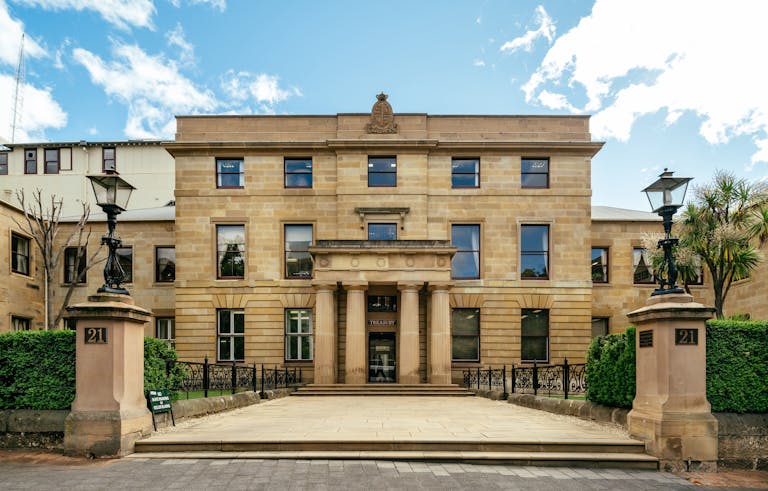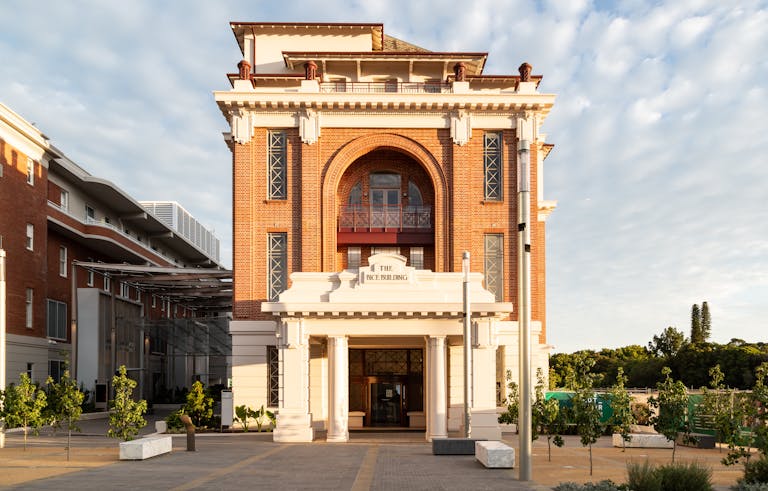The Tasmanian Museum and Art Gallery
Representing a Hobart landmark and reconnecting it to its past
- Location
- Australia
- Client
- Tasmanian Museum and Art Gallery
Working alongside Hansen Yuncken, this project saw the Bond Store re-rendered and re-roofed to its original state as well as the stabilisation of the well-recognised Watergate Wall at the site entrance. With works running from 2017 to 2022, Purcell continue to provide a range of services across the collections of Heritage Buildings on the site.
The Tasmanian Museum and Art Gallery is situated on the traditional lands of the Palawa people and comprises a collection of contemporary and historic structures, including some of the oldest remaining structures of the colonial period. The site includes the first permanent structure built in Hobart, the nationally rare and highly intact Bond Store, together with the adjacent Watergate Wall.

Everybody has seen the Bond Store as a brick building with stone detailing for a very long time. It will change people's relationship with the building and their perception of the building as part of the wider Tasmanian Museum and Art Gallery complex because of that beautiful texture and finish that we're reintroducing, but that conservation and maintenance aspect aside, aesthetically, we're returning the building to the presentation as was intended.’
— Lucy Burke Smith, Associate Partner at Purcell
Central to the Hobart community and adorned with graffiti by those who built it in 1826, the Tasmania Museum and Art Gallery (TMAG) is one of the oldest museum and art galleries in Australia. Following a high wind event that compromised the stability of the Watergate Wall, described by Heritage Tasmania as ‘a major symbolic and historical entry point to the Stores building’, the project has restabilised the Wall and aided much needed conservation and repair works to the adjacent Bond Store, ensuring its retention for future generations.
These projects are important because we're conserving the built environment for future generations. These are threads of stories that help us all understand our connection with place, and although they're only from the colonial beginnings as opposed to our First Nations people, they are part of that broader conversation.
— Lucy Burke Smith, Associate Partner at Purcell

Through archival research and fabric analysis it was understood that the structures had undergone previous works that impacted the integrity and condition of significant masonry below. Restoration and repair works were carried out by specialist contractors using traditional materials and techniques to replicate the original finishes, including replacement of the roof tiles to slate as originally selected. The return to traditional finishes acts as a preventative conservation measure while providing a visual reminder of the original presentation of these facades.
I think it's important for the community, and Tasmania more broadly, to see a representation of one of the historic buildings and a reintroduction of some really significant traditional finishes and techniques.
— Lucy Burke Smith, Associate Partner at Purcell

